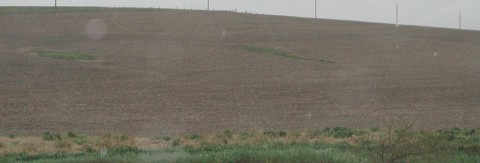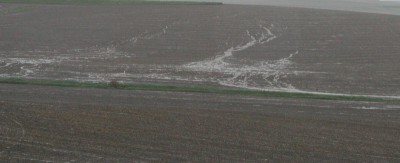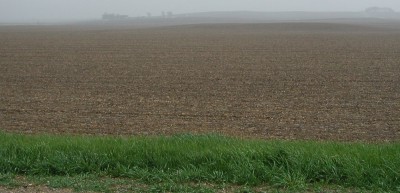|
|
|
On the right a 3-year no-tilled field ---- corn planted into soybean stubble. |
May 11, 2002 after 2 inches of rain over a 2 hour time frame.
|
|
|
On the right a 3-year no-tilled field ---- corn planted into soybean stubble. |
 |
 |
 Above is a flat bottom ground no-till field. This picture was taken 1 hour after the 2-inch rain. |
|
|
|
|
|
Above is a no-till field where major tillage was done last fall and this spring to provide drainage of a low area. The water standing here is only from the rain event.
No run-off came into this area.
|
Nightcrawlers are very important in the water infiltration of a no-till field.
To further show the water infiltration differences between a tilled field, no-tilled field, no-tilled field with nightcrawlers and CRP with nightcrawlers this web page will show you the dramatic results found during a water infiltration test. Water Infiltration Test
The pictures above visually back up the accuracy of this water infiltration test.